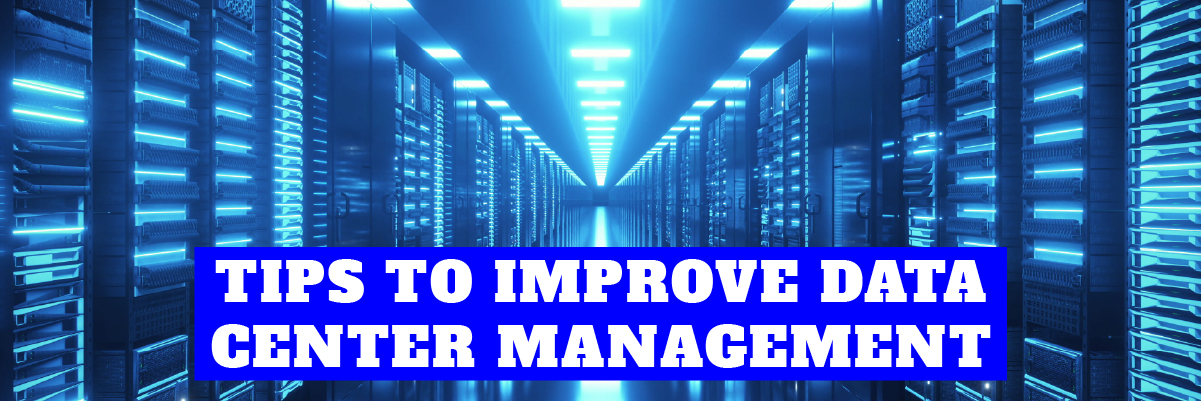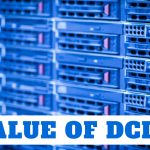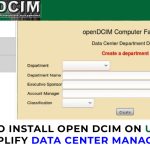Tips to Improve Data Center Management
Data center infrastructure is an integral part of modern businesses, data center infrastructure at facilities is becoming complex to manage with dynamic landscapes. Cooling, power, space, cable – everything must run efficiently for enabling business continuity, here are some tips data centers can follow for efficient Management
Deploy DCIM Tools
Few things are more critical to data center operations best practices than an effective data center infrastructure management (DCIM) platform. Managing a data center without DCIM software is nearly impossible, knowing what’s happening in the moment and even minor problems can be extremely disruptive because they take the facility by surprise.
Implementing DCIM tools provides complete visibility into the facility’s IT infrastructure, allowing data center personnel to monitor power usage, cooling needs, and traffic demands in real time. They can also analyze historical trends to optimize deployments for better performance. With a DCIM platform in place, IT support tickets can be resolved quickly and customers can communicate their deployment needs without having to go through a complicated request process.
Optimize Data Floor Space
Deployments matter, especially when it comes to issues of power distribution and rack density. Inefficient deployments can lead to problems like wasted energy going to underutilized servers or too much heat being generated for the cooling infrastructure to manage. It is no longer possible to manage temperatures on a facility level because rack densities may vary widely, creating hot spots in one zone while another zone is cooled below the desired temperature. The layout of the data floor can be subject to quite a bit of change, especially in a colocation facility where new servers are being deployed on a regular basis. Data centers need to be aware of how every piece of equipment on the data floor interacts with the others in order to optimize the environment efficiently. Installing a network of temperature sensors across the data center helps ensure that all equipment is operating within the recommended temperature range. By sensing temperatures at multiple locations the airflow and cooling capacity of the precision cooling units can be more precisely controlled, resulting in more efficient operation.
With power densities and energy costs both rising, the ability to monitor energy consumption is essential for effective data center management. To gain a comprehensive picture of data center power consumption, power should be monitored at the Uninterruptible Power Supply (UPS), the room Power Distribution Unit (PDU) and within the rack. Measurements taken at the UPS provide a base measure of data center energy consumption that can be used to calculate Power Usage Effectiveness (PUE) and identify energy consumption trends. Monitoring the room PDU prevents overload conditions at the PDU and helps ensure power is distributed evenly across the facility.
With increasing densities, a single rack can now support the same computing capacity that used to require an entire room. Visibility into conditions in the rack can help prevent many of the most common threats to rack-based equipment, including accidental or malicious tampering, and the presence of water, smoke and excess humidity or temperature. A rack monitoring unit can be configured to trigger alarms when rack doors are opened, when water or smoke is detected, or when temperature or humidity thresholds are exceeded, these can be connected to a central monitoring system for efficient monitoring.
In addition to constantly monitoring the data floor’s power, floor density and cooling needs, data center standards should approach every deployment with an eye toward efficiency and performance. The challenge is to deliver the optimal IT infrastructure setup for each customer without compromising performance elsewhere on the data floor. DCIM software, with its accumulated data on power and cooling usage, can help to ensure that every colocation customer is getting the most efficient deployment possible while also maintaining the overall health of the data center’s infrastructure.
Organize Cabling
Data centers necessarily use quite a lot of cable. Whether it’s bulky power cables or fiber-optic network cables, the facility must find ways to manage all that cabling effectively to make sure it all goes to the proper ports. While messy, unstructured cabling might be a viable solution for a very small on-premises data room in a private office, it’s completely unsuitable, and even dangerous, for even the smallest data centers. Cabling used in scalable infrastructure must be highly structured and organized if IT personnel are going to have any hope of managing it all.
Some of the Best practices are as follows
- Run cables to the sides of server racks to ease adding or removing servers from the shelf.
- Bundle cables together to conveniently connect the next piece of hardware down to the floor in data centers with elevated floors or up to the ceiling in data centers with wires that run through the ceiling.
- Plan in advance for installing additional hardware. Disorganized cabling can interfere with air circulation and cooling patterns. Planning prevents damages due to quickly rising temperatures caused by restricted air movement.
- Label cables securely on each end. This labeling process enables you to conveniently locate cables for testing or repair, install new equipment, or remove extra cables after equipment has been moved or upgraded, which saves time and money.
- Color code cables for quick identification. Choose a color scheme that works for you and your team. It may be wise to put up a legend signifying the meaning of the colors of each cable. You may also color-code the cable’s destination, especially for larger installations across floors or offices.
Poorly organized cabling is not only messy and difficult to work with, but it can also create serious problems in a data center environment. Too many cables in a confined space can restrict air flow, putting more strain on both computing equipment and the facility’s cooling infrastructure. Inefficient cabling can also place unnecessary restrictions on deployments, which can make power distribution inefficiencies even worse.
Cycle Equipment
Computer technology advances quickly. While the typical lifecycle of a server is about three to five years, more efficient designs that allow data centers to maximize their space and power usage can often make a piece of equipment obsolete before its lifecycle would otherwise suggest. With many data center standards pushing toward increased virtualization, there is a powerful incentive to replace older, less efficient servers.
But data centers don’t just need to think about cycling computing equipment. Power distribution units (PDUs), air handlers, and uninterruptible power supply (UPS) batteries all have an expected lifespan. Replacing these infrastructure elements on a regular schedule or controlled monitoring cycle allows facilities to maximize the efficiency of their data center operations and deliver superior performance to colocation customers.
By implementing a number of best practices, data centers can significantly improve their operations in terms of efficiency and performance. Colocation customers and MSP partners stand to benefit immensely from these practices, reaping the benefits of reduced energy costs and a more robust, reliable IT infrastructure.
Perform Routine Maintenance
Regular or routine maintenance schedules will cut down on hardware failures, at the least allowing technicians to prepare for a problem before it happens, Routine maintenance includes checking operational hardware, identifying problematic equipment, performing regular data backups and monitoring outlying equipment. Preventative maintenance can mean the difference between minor issues and a complete hardware failure.
When implemented effectively, data center infrastructure management can deliver value not only to data center providers but also extend it to their customers. Not only will it enable improved operations, greater agility, and lowered risk, it also accelerates tasks to focus on enhanced data center systems and approaches.






